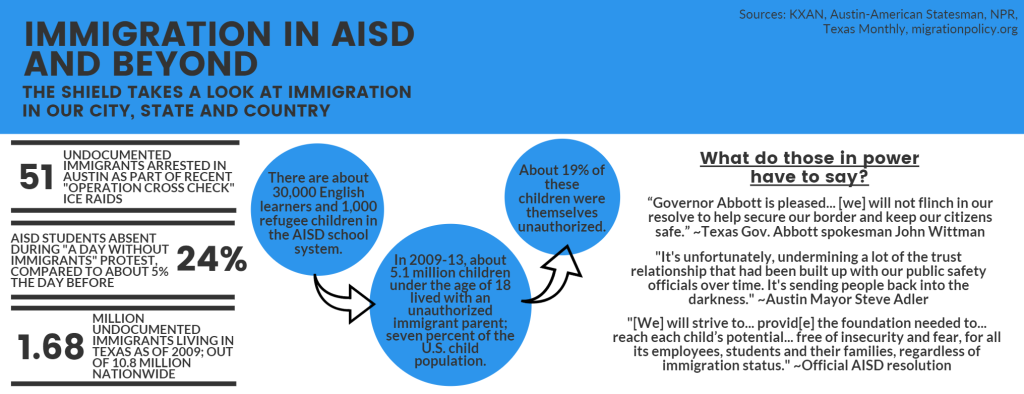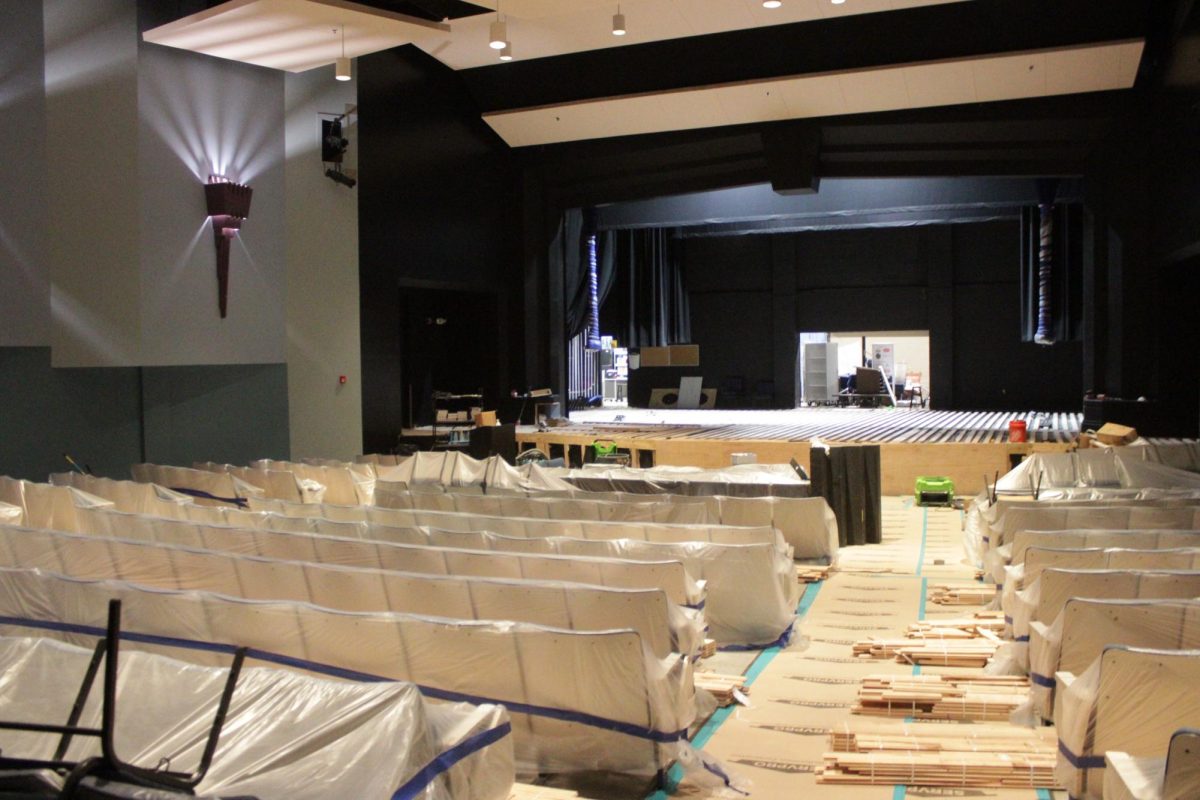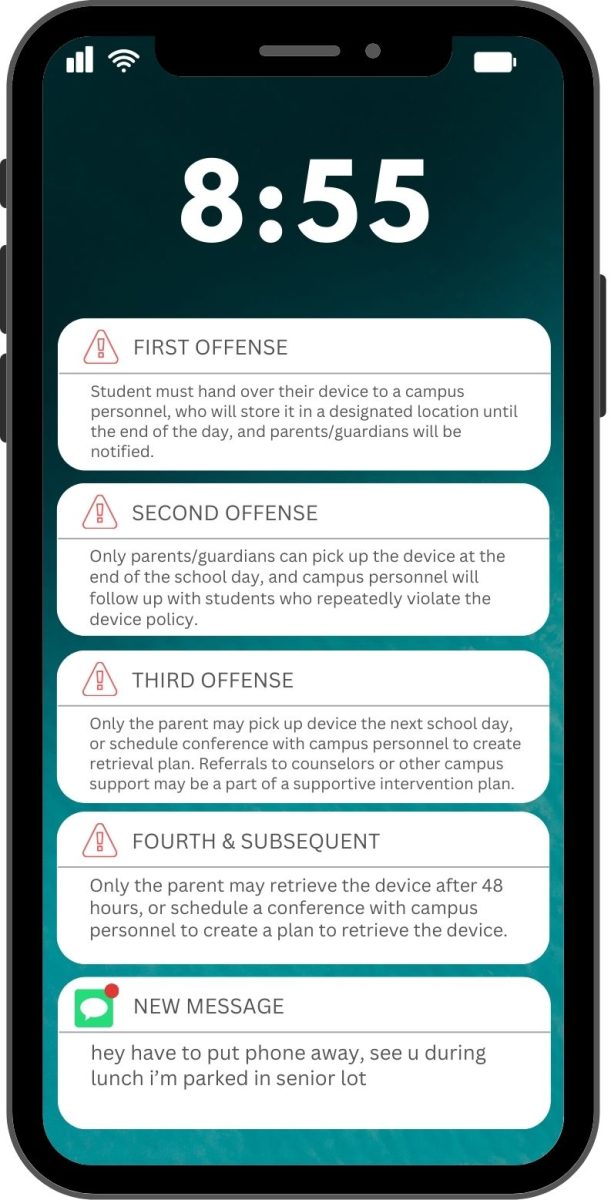
Local officials fight to retain sanctuary city status despite funding cuts, executive order
The Austin ISD board of trustees approved a resolution on Feb. 20 declaring all AISD classrooms to be safe spaces for every student, regardless of the immigration status of the student or their parents. This resolution’s accepting attitude contrasts markedly with recently proposed pieces of state and federal legislation, or so-called “anti-sanctuary city” bills, that seek to divert funds from cities who do not cooperate fully with Immigration and Customs Enforcement, or ICE. Gov. Greg Abbott has denied Travis County $1.5 million in grants that would have funded crime victim services, courts and other programs.
Despite losing state funding, Travis County sheriff Sally Hernandez, and Austin officials have pledged to keep Austin a sanctuary city. Junior Josué Zepeda-Sanic, who legally immigrated to the U.S. from Guatemala in 2008, supports these measures.
“I think it’s good [that Austin is a sanctuary city] because I have a lot of friends who are illegal immigrants,” Zepeda-Sanic said. “They didn’t come to America to take jobs; they came to America to have a better life compared to [their home countries], where there is a lot of poverty and death. They’re trying to escape that and make something better for themselves.”
Freshman Daniel Giro agreed that description is accurate for most immigrants but not all.
“I believe that [sanctuary cities] give a lot more citizens to the U.S. who are honest and want to do a good job,” Giro said. “But [being a sanctuary city] also attracts a lot more people who come into the city who are up to no good.”
President Donald Trump has long stood by this position, positing that illegal immigrants are a national security risk. On Jan. 25, Trump signed an executive order, titled, “Enhancing Public Safety in the Interior of the United States,” that withdraws federal funds from any sanctuary city in the country. Section one of the order states that, “many aliens who illegally enter the United States … present a significant threat to national security and public safety.”
Zepeda-Sanic is opposed to Trump’s executive order for a simple reason:
“[Immigrants] are dying,” Zepeda-Sanic said. “They want to be better. They don’t want to die. That’s why they seek help. And it’s not like illegal immigrants come here to rob people, they don’t bring all these drugs—a portion of [illegal immigrants] do bring them, but you can’t generalize a whole group of people, a whole race. You can’t generalize a whole population. It’s just unfair.”
In addition to protesting what they view as discriminatory generalization, immigrants and their supporters have also sought to illustrate that immigrants are essential to American society. On Feb. 16, thousands of Austin immigrants, most of them from Mexico, Central, and South America, organized a day without immigrants. By staying home from work or from school, immigrants sought to show just how significant they are to the workforce.
KXAN reported that 20,008 AISD students were absent on Feb. 16, the day without immigrants. That’s an increase of 15,792 students from the day before. According to the official school attendace report, 21 percent of Hispanic students at McCallum were absent on Feb. 16, an 11 percent increase from the day before. That’s an increase of 84 students.
“[Missing school] is kind of over the top,” Giro said. “I feel like a different protest should have been held, and that a lot of people aren’t really understanding that Trump is trying to separate the good immigrants from the bad ones,” Giro said.
The Shield contacted the office of AISD Superintendent Paul Cruz for a comment on the board of trustees resolution and on the anti-sanctuary cities bill. Edna Butts, the AISD director of intergovermental relations and policy oversight, said via email that the school district cannot take positions on bills but that the anti-sanctuary city bill currently proposed in Texas, Senate Bill 4, would not apply to school districts.
A subchapter of the bill states that “This subchapter does not apply to a school district or open-enrollment charter school. This subchapter does not apply to the release of information contained in education records of an educational agency or institution.”
Regardless of whether or not the bill is passed, Zepeda-Sanic says that illegal immigrants will continue to come to the United States because they have no other choice.
“If you have a person whose family is being persecuted because of drugs, or their friends are getting killed, they’re not going to go through that whole process of getting papers and stuff,” Zepeda-Sanic said. “Getting papers takes a long time, and I know this because my mom had to get papers for me, and it took her about three years. So people don’t have time for that.”







